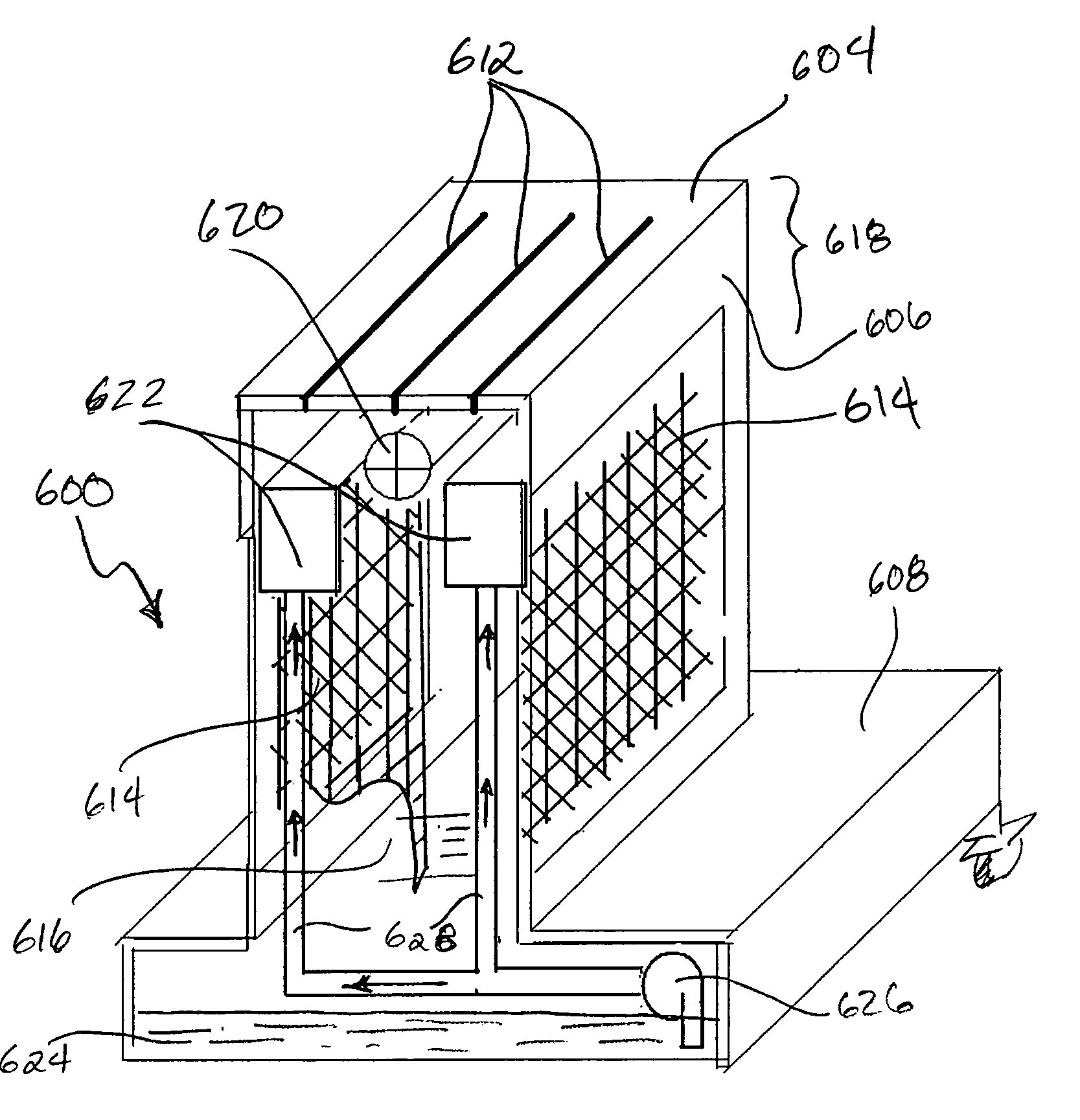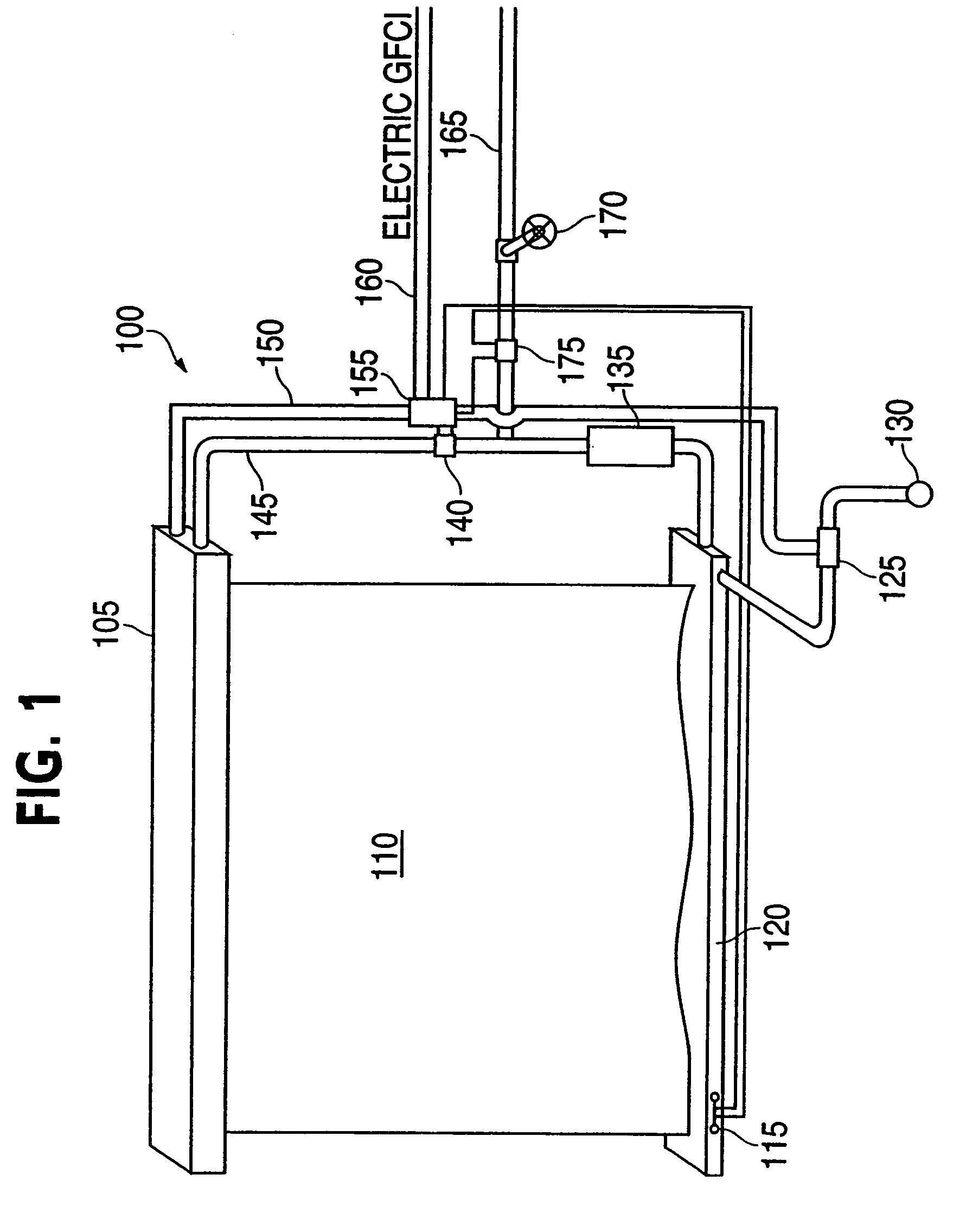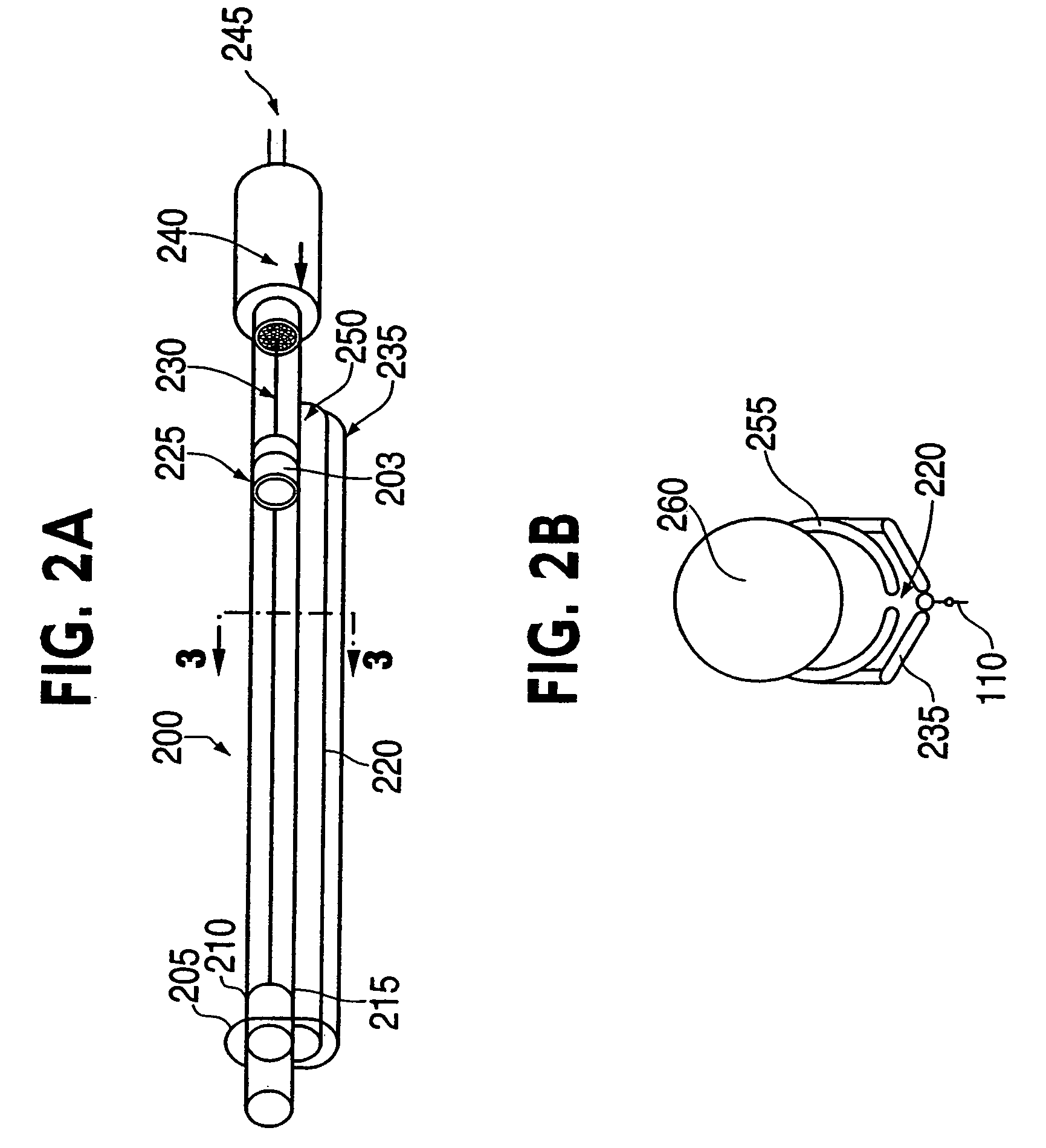Water curtain apparatus and method
a technology of water curtain and water curtain rod, which is applied in the direction of lighting and heating apparatus, heating types, separation processes, etc., can solve the problems of large amount of electricity, rippling effect of falling water, and limitations inherent in ambient humidity reducing efficacy, and achieve the effect of low viscosity
- Summary
- Abstract
- Description
- Claims
- Application Information
AI Technical Summary
Problems solved by technology
Method used
Image
Examples
Embodiment Construction
[0040]The invention will now be described with reference to the drawing figures, in which like reference numerals refer to like parts throughout. As shown in FIG. 1, an embodiment in accordance with the present invention provides a water curtain or drape assembly 100 having a drape hood 105, material drape 110, float overflow shut-off 115, collection return 120, a drainage line solenoid 125 which preferably is electric, a drainage line 130, a filter 135, drape solenoid 140 which preferably is electric, a drape feed line 145, a pump 240, a pump power line 150, an on / off switch 155 to a power source 160 which preferably is a ground fault circuit interrupter (GFCI) power line for obvious safety concerns, a feed line 165, and a shutoff valve 170.
[0041]The present invention, wherein in one aspect provides that in some embodiments may include a decorative, useful and educational indoor waterfall which utilizes a low viscosity liquid, such as water or other aqueous liquid, to form an attra...
PUM
| Property | Measurement | Unit |
|---|---|---|
| ninety degree angle | aaaaa | aaaaa |
| translucent | aaaaa | aaaaa |
| velocity | aaaaa | aaaaa |
Abstract
Description
Claims
Application Information
 Login to View More
Login to View More - R&D
- Intellectual Property
- Life Sciences
- Materials
- Tech Scout
- Unparalleled Data Quality
- Higher Quality Content
- 60% Fewer Hallucinations
Browse by: Latest US Patents, China's latest patents, Technical Efficacy Thesaurus, Application Domain, Technology Topic, Popular Technical Reports.
© 2025 PatSnap. All rights reserved.Legal|Privacy policy|Modern Slavery Act Transparency Statement|Sitemap|About US| Contact US: help@patsnap.com



